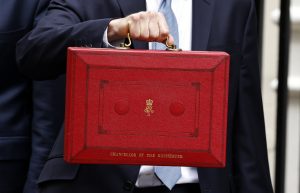5th July 2021
July Market Overview
UK
Another positive month for economic data out of the UK, with the recovery infull swing as coronavirus restrictions are eased and people return to some semblance of normality.
Matt Hancock has resigned his position as Health Secretary after being caught breaking social distancing guidelines and has been replaced with former cabinet member Sajid Javid. Between the two, Jajid is said to be much more inclined to bring an end to the remaining restrictions and has said July 19 remains, in his view, the ultimate end date, commenting that the UK must begin to learn to live with the coronavirus.
UK house prices hit another record as they saw a 10.9% annual jump from last year, the most in nearly 7 years, with prices reaching an average £242,832. With supply limited and demand not likely to slow enough, this looks to be a trend set to continue for the foreseeable future. Almost 7 in 10 homeowners considering a move said they would be doing it even without the continued taxsupport by Rishi Sunak, which has now expired having been extended from last year. UK mortgage approvals also rose unexpectedly in April, according to the Bank of England. 86,921 new loans were approved in April, up from 83,400 the month before, with the value of these loans falling to £3.3 billion from a record £11.5 billion previously.
The UK has begun the process of joining the Trans-Pacific Trade Partnership. Existing member nations of the trade deal agreed to allow the UK to begin the process to join. With the UK joining, this would make the zone equal to the EU in terms of economic size, so is potentially significant for the whole region as well as the UK. The US had withdrew from negotiations to join under the leadership of Donald Trump, and his successor Joe Biden has not indicated a reversal is likely. Negotiations to join the partnership should now be made easier, with the UK having secured a trade agreement with Australia, which is already in the Trans-Pacific agreement. Whilst this deal will only add 0.02% to the UK economy, it is a symbolic deal post-Brexit, and paves the way for more such deals. In addition to these, the UK has also secured a trade agreement with Norway.
With the explosion of digital currencies (assets) over the past several years it will come as no surprise to hear that the Bank of England have begun research into a government-backed digital currency. The Bank modelled the impact of introducing digital forms of money on the retail banking sector and in one scenario considered what would happen if a fifth of all deposits went digital. A digital pound would cause significant flows out of the banking system as it would be issued direct to consumers which could in turn put the cost of credit up by one fifth of a percent. The bank suggested in its report that a transition period would likely be necessary. The BOE stated any introduction of a digital pound was a number of years away and the bank was still in an exploratory phase.

Eurozone/EU
European finance ministers have said a deal to stop global tax abuse is close. Finance ministers from France, Germany, Italy and Spain met in London at the G7 summit to discuss a range of topics. Whilst Spain is not a member of the G7, representatives attended this separate meeting. The countries involved are aiming to bring an end to tax avoidance by multinationals and big technology companies which has long frustrated governments in Europe, with the US being reluctant in the past to engage. Plans so far involve a minimum global corporation tax rate which has now been agreed in principle, and a system whereby companies pay tax based on where they generate revenue rather than where they are domiciled for tax purposes. An exclusion for financial services has also been agreed in a big boost for London.
In their last meeting the ECB agreed not to raise interest rates and to further extend its bond buying programme. This was largely expected by the markets but came as welcome relief to those concerned that the Bank may look to taperits quantitative easing programme.
The European Union is continuing its support for economies and businesses going into next year, having agreed to extend bank capital relief by a further nine months. The aim is to ensure lenders can keep supplying credit to the economy, which is critical to the continued recovery. The ECB’s supervisory board will allow lenders to continue to exclude deposits held at central banks when calculating their leverage ratio, until March next year. This move is in contrast to the US where similar relief has been allowed to lapse, though the US is far ahead of Europe in reopening its economy and resuming normal life.
In Germany, the CDU are now clear favourites in the runup to the national elections later this year, with the gap to the Greens widening, having previously fallen behind. The new CDU leader and man most likely to be the next Chancellor is getting firm on spending, saying the EU must bring back strict budget rules after COVID. This is bad news for heavily indebted EU members such as Italy and Greece, which would need to impose harsh austerity to bring their spending back under control. He also wants to move to a new system of qualified majority voting on key foreign policy decisions, in a move designed to strip smaller EU states of their veto powers and give more control to the larger states.
US
In an interesting month for economic data out of the US, we saw the annual inflation rate accelerated to 5% in May of 2021 from 4.2% in April and above market forecasts of 4.7%. It is the highest reading since August of 2008 amid low base effects from last year when the coronavirus pandemic hit the economy hard, rising consumer demand as the economy reopens, soaring commodity prices, supply constraints and higher wages as companies grapple with a labour shortage. Biggest price increases were recorded for gasoline (56.2%), used cars and trucks (29.7%), utility gas service (13.5%), transportation services (11.2%) and apparel (5.6%). Shelter costs were up 2.2% and food also went up 2.2%.
The number of job openings in the US rose by almost 1.0 million from the previous month to a new record high of 9.286 million in April 2021, easily beating market expectations of 8.3 million. Jobs were created in a number of industries with the largest increases being recorded in accommodation and food services (+349,000), other services (+115,000), and durable goods manufacturing (+78,000).
Imports to the United States declined by USD 3.8 billion to USD 273.9 billion in April 2021, from last month’s all-time high, due to lower purchases of consumer goods (down USD 2.6 billion) such as other textile apparel and household goods. Exports from the United States increased by USD 2.3 billion from a month earlier to USD 205.0 billion in April 2021, the highest level sinceFebruary 2020, as the global demand recovery gathered pace amid ongoing re-opening efforts.
It also appears consumers are gaining in confidence. The University of Michigan’s consumer sentiment for the US increased to 86.4 in June of 2021 from 82.9 in May, beating market forecasts of 84, preliminary estimates showed. Expectations soared (83.8 vs 78.8) and the current conditions gauge also edged up (90.6 vs 89.4). Meanwhile, inflation expectations for the year ahead fell to 4% from 4.6% and the 5-year outlook declined to 2.8% from 3%. Stronger growth in the national economy was anticipated, with an all-time record number of consumers anticipating a net decline in unemployment. Rising inflation remained a top concern of consumers, although the expected rate of inflation declined in early June.
Asia
China’s consumers remain cautious even though Covid has been under controlfor much of the past year and as the rest of the economy stages a V-shaped recovery. While spending has passed 2019 levels, consumer confidence and buying intentions are lagging, with economists pointing to unequal distribution of pandemic savings and lingering virus worries.
China’s annual inflation rate jumped to 1.3% in May 2021 from 0.9% a month earlier and compared with market consensus of 1.6%. This was the highest reading since September 2020, amid a faster increase in cost of non-food goods (1.6% vs 1.3% in April), led by transportation & communication (5.5% vs 4.9%); clothing (0.4% vs 0.2%); rent, fuel & utilities (0.7% vs 0.4%); health (0.2% vs 0.1%), household goods and services (0.4% vs 0.4), and education, culture (1.5% vs1.3%). Also, food prices went up 0.3%, the first rise in four months, after a 0.7% drop in April. On a monthly basis, consumer prices fell 0.2% in May, comparedwith forecasts of a 0.1% decline and after a 0.3% drop in April.
Imports to China jumped 51.1 percent year-on-year to USD 218.38 billion in May 2021, compared with market consensus of 51.5 percent surge, and after a 43.1 percent rise a month earlier. This was the steepest increase in inbound shipments since January 2011, amid strengthening domestic demand, surging commodity prices and a low base effect from last year. Exports from China grew by 27.9% YoY to USD 263.92 billion in May 2021, easing from a 32.2% surge in April and compared with market consensus of 32.1%. This marked the eleventh straight month of increase in outbound shipments, as more countries reopened their economies although higher raw material costs, global chip shortage, logistics bottlenecks and lower capacity in Guangdong due to the coronavirus outbreak weighed on sales.
In Japan the economy shrank at an annualized rate of 3.9 percent in the first quarter of 2021, compared with the preliminary figure of 5.1% contraction and market consensus of a 4.8% fall and following an 11.7% growth in Q4. Private consumption, which accounts for more than half of Japan’s GDP, fell 5.8 percent, the first drop in three quarters, after a 9 percent growth in the December quarter.
Industrial production in Japan rose by 2.9 percent month-over-month in April 2021, compared with the preliminary reading of a 2.5 percent gain and after a final 1.7 percent rise a month earlier. This was the second straight month of increase in industrial output, as the economy recovered further from the coronavirus pandemic. On a yearly basis, industrial output jumped by 15.8 percent in April, accelerating sharply from a 3.4 percent growth in March.
Disclaimer:
The opinions expressed in this update are those of A&J Wealth ManagementLimited only, as at 5th July 2021, and are subject to change.
The content of this publication is for information purposes and should not be treated as a forecast, research or advice to buy or sell any particular investmentor to adopt any investment strategy. It does not provide personal advice based on an assessment of your own circumstances. Any views expressed are based on information received from a variety of sources which we believe to be reliable but are not guaranteed as to accuracy or completeness. Any expressions of opinion are subject to change without notice.
Past performance is not a reliable indicator of future results. Investing involvesrisk and the value of investments, and the income from them, may fall as wellas rise and are not guaranteed. Investors may not get back the original amountinvested.












